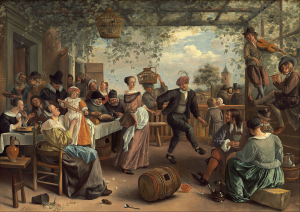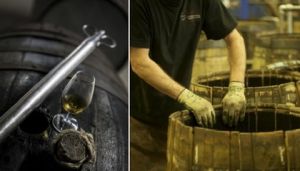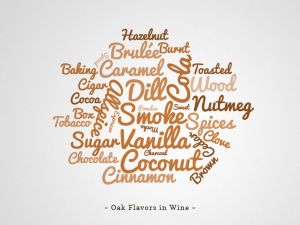Before there were glass bottles (1600’s and before), most wines were stored and sold in wooden barrels. In fact, paintings from around this time period often show wine barrels strewn about. And, while we’ve outgrown the necessity for barrels to store and transport wine, we’ve come to acquire a taste for it. Oak barrels are an integral part of modern wine and whisky making.
The two most common types of oak barrels used for winemaking are the American oak barrel and the French oak barrel. American oak barrels are cheaper, have a wider grain and lower wood tannins as compared to French or European White oak.
From the golden hued Chardonnays of Montrachet to first-growth Bordeaux, the most expensive wines in the world are produced with oak aging. The top fifty most expensive wines in the world are oak-aged in some way. Oak is a crucial and often overlooked component in the world of fine wine.
Like wine, oak is nuanced with type, size, tannin, age, grain, toast level treatment (the more the inside of the barrel is heated or toasted, the more poignant the flavors) and terroir lend each barrel a distinct personality. White oak trees are preferred for barrels, and chosen over their red counterparts, because they are less porous and hold liquid better. The wood is primarily harvested in the United States, France and Eastern Europe, and each variety offers a unique aromatic and flavor profile that influences the final product.
Aging wine in oak barrels is the result of a “happy accident” that is has now become a large factor in winemaking giving many wines that little extra something. As with most things wine, the proliferation of wine barrels began with the Romans. And, as with most things Roman, wooden barrels were an idea stolen from someone they conquered.
Roman author and naturalist Pliny the Elder (you might know him from the beer) encountered craftsman making wooden barrels when he visited the Celtic civilization of Gaul during the first century AD. These watertight vessels were made from oak and fastened with metal rings. At the time, they were designed to hold water, oils and were sometimes used as makeshift explosives used in combat. The Romans were interested in these barrels mainly because they would aid the transportation of wine throughout the empire. By this time, wine was already being traded throughout Rome, but in amphorae – handled clay vases similar in size to today’s wine bottles. With the adoption of wooden barrels, Romans quickly discovered that they could move more quantities of wine in lighter, stronger, containers, which were easy to roll for overland transportation to all those conquering troops Rome needed to take over the world. Today, barrels are rarely used to move wine. Instead, barrels have become the preferred method of wine storage, and play a significant role in actually forming the identity of wine as we know it today. They’re appreciated for their interaction with the wine and their ability to help in the aromatic and structural makeup of a wine.
In France, barrel-oak forests are run by the ONF, the country’s national forestry office. Government-run forests have been in operation in France for over 400 years and were first maintained in order to produce wood for an immense naval fleet. Today, used solely for wine barrels, these forests are, by nature of the business, sustainable and carefully maintained. Only about 10 percent of the oak tree saplings that grow in a forest are actually allowed to grow into full maturity. Many are uprooted to allow only the very strongest to survive. Having fewer trees in the forest means eliminating competition and oak trees grow tall and straight without much branching.
Certain red and white wines are ideal to age in oak barrels. Reds tend to be aged longer – about 12 to 18 months, depending on the vintner. During this time, the barrel and its wine are constantly exchanging chemicals and particles. Ellagic tannins are critical chemical compounds diffused from a barrel into the wine which encourage oxidation.
One oak tree is only good for two barrels (one barrel equates to about 300 bottles of wine), and each barrel can only be used two to three times before its delicious oaky flavor begins to fade. Some styles dictate that the oak, once split, must be air-dried for up to three years.
SIMPLY BEAUTIFUL. SIMPLY NATURAL. SIMPLY OAK.





